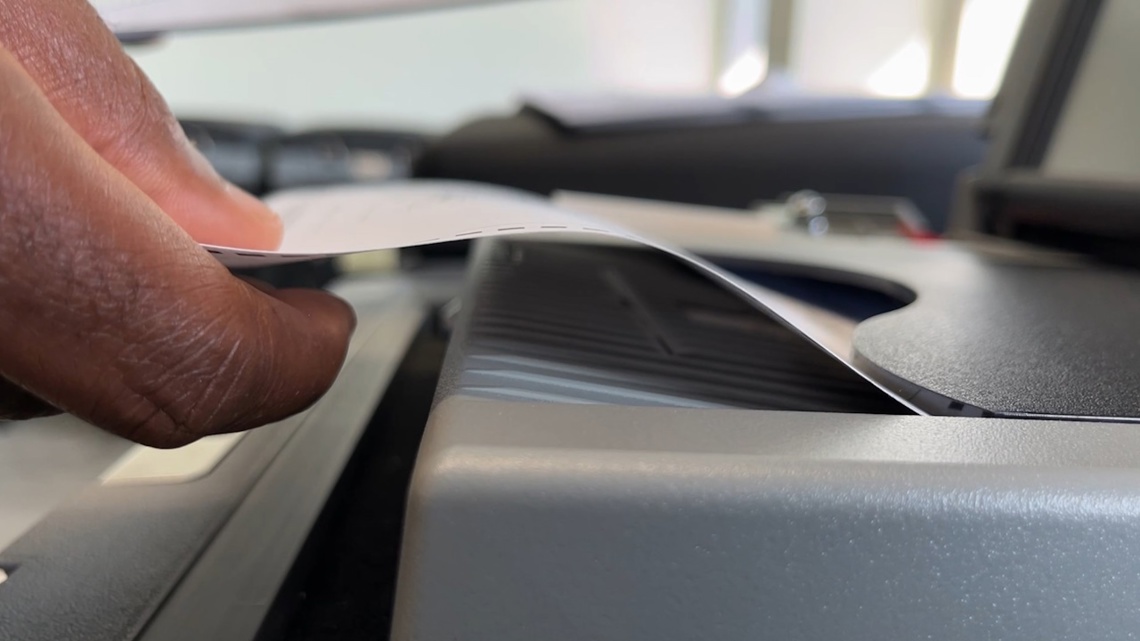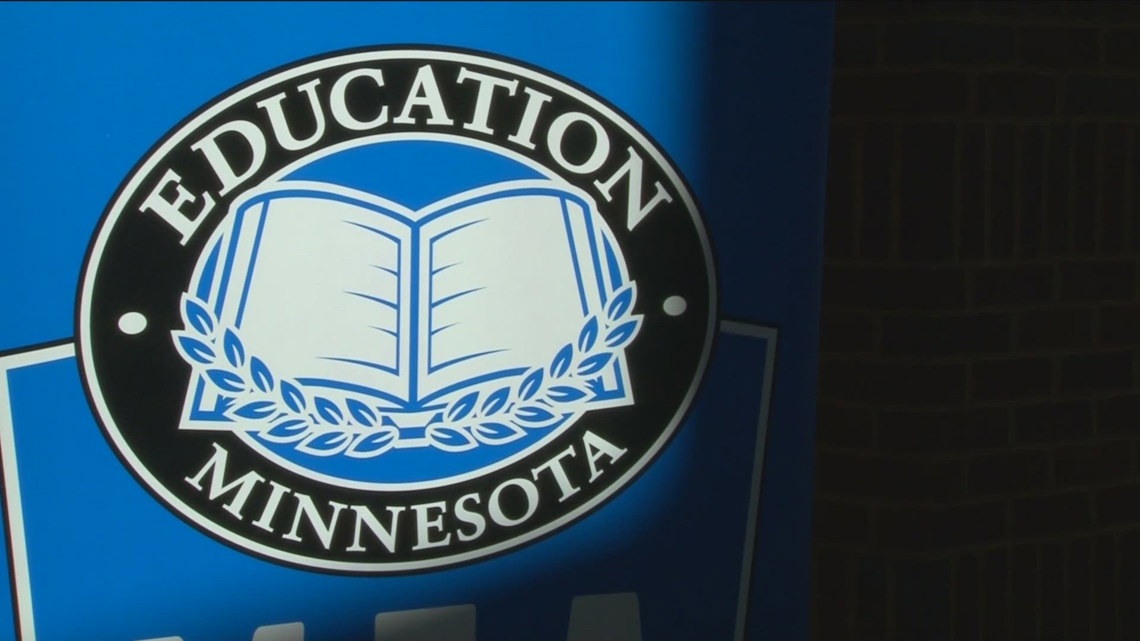Kare11
New task force tackles worker misclassification


The attorney general’s task force is aimed at solving the issue that puts gig economy works at huge disadvantage.
ST PAUL, Minn. — In a conference room on the third floor of the State Capitol, members of the Attorney General’s Advisory Task Force on Worker Misclassification sat down for the first time to dive into an issue that has grown with the gig economy, namely people who appear to be employees but are treated instead as independent contractors.
In the construction trades especially, there are many workers who think they’re an employee of a company but learn too late that they’re being paid as independent contractors instead. It also pops up often in building cleaning and security service settings.
“If your ‘employer’ says you’re not an employee but you’re an independent contractor, they can pay you but not take any of the responsibilities that go with the employer-employee relationship and then still try to direct every aspect of your work. That’s not fair,” Ellison told KARE.
The working group’s goal is to create a blueprint for detecting and reining in such abuse. That will include making recommendations to the legislature and state agencies. The panel includes people from many different perspectives on workforce issues.
“We’ve got a group that includes both workers and employers, business and labor, and we’re trying to come to a set of ideas where everybody can prosper, where we have fairness,” Ellison explained.
“One of the groups I’m really concerned about is the companies who treat workers fairly. They should not be at a competitive disadvantage because they follow the rules.”
One of the overriding themes that emerged in the inaugural meeting was that misclassification doesn’t just hurt the workers involved, but also adversely impacts honest employers and taxpayers who have to pick up the tab for injuries on job sites.
“The social contract is built on the fact that employers employ employees and what comes with that is unemployment insurance, Workers Comp, but also just general wage and hour protections, discrimination protections, all those things,” Rep. Emma Greenman, the Minneapolis Democrat who co-chairs the task force, told KARE.
“Most folks assume, ‘I go to work, and I’m going to get paid at least minimum wage. I go and do a job and if I’m going to get hurt I’m going to have Workers Comp’.”
The Attorney General’s office and the Minnesota Department of Labor and Industry do have enforcement powers over wage theft, when it can be discovered and proven. Some workers fear coming forward to report abuse, because they don’t want to lose their jobs or worry about being deported if they make waves.
“With vulnerable workers, folks who may not have status they are being misclassified and in some cases that looks like just being paid under the table so it’s depriving those workers,” Rep. Greenman remarked.
“If you’re in really dangerous job and if get hurt on the job and you’re misclassified you won’t have access to Workers’ Comp. You also might not have access to health care. Then it becomes not just an issue for that worker and that family, it becomes an issue across the industry and also for taxpayers and other folks paying for that uncompensated care.”
Greenman and Ellison both stressed that some of the misclassification is an honest misunderstanding of how Minnesota’s labor laws work. In those cases government intervention is more of an instructional nature.
“We don’t really want a lawsuit. We want people to comply with the law! And a lot of businesses do, so we think the rest should,” Ellison remarked.
At the same time this task force is working, the Office of the Legislative Auditor is reviewing whether current laws are adequate to deal with worker misclassification. Representative Greenman says it’s not just about passing tougher laws, but also about making sure state agencies have the resources they need to tackle these problems.
Co-chair: Rod Adams, Executive Director, The New Justice Project
Co-chair: Rep. Emma Greenman, MInnesota House of Representatives
Commissioner Nicole Blissenbach, Commissioner, Department of Labor and Industry
Octavio Chung Bustamante, Marketing Representative, LIUNA Minnesota and North Dakota
Daniel Getschel, Director, Individual Income Taxes & Withholding, Department of Revenue
Melissa Hysing, Legislative Director, MN AFL-CIO
Burt Johnson, General Counsel, North Central States Regional Council of Carpenters
Briana Kemp, Policy Lead, Centro de Trabajadores Unidos en la Lucha (CTUL)
Amir Malik, Compliance Manager, City of Bloomington City Attorney’s Office
Senator Clare Oumou Verbeten, Member of the Minnesota Senate
Evan Rowe, Deputy Commissioner of Workforce Services and Operations, Department of Employment and Economic Development (DEED)
Aaron Sojourner, Senior Researcher, W. E. Upjohn Institute for Employment Research
Brittany VanDerBill, Owner, B. VanDerBill Consulting LLC
Kim Vu-Dinh, Associate Professor, Mitchell Hamline School of Law
Jonathan Weinhagen, President & CEO, Minneapolis Regional Chamber of Commerce
Kare11
Tests underway to ensure accurate ballot count in Minnesota


Elections officials across the state are wrapping up mandatory testing of ballot tabulator machines.
BLAINE, Minn. — The third floor of this town’s city hall is off limits to the public, except when it comes to showing constituents the vote counting equipment is working.
Blaine City Clerk Cathy Sorensen Thursday hosted the public accuracy test for her city’s vote-counting machinery and invited news cameras to come along for the ride.
“The public accuracy test is a great way for anyone from the public to come in and just see for themselves that the machines are working how they are supposed to work,” Sorensen told KARE.
It’s more than just a show-and-tell event. The public accuracy test is part of state law. Every vote tabulating machine in the state has to be tested before each election, and those tests must be open to the public.
Sorensen’s staff had already tested all 32 of their vote scanners before Thursday but re-tested three of them to show the media how the process works. The exercise serves the dual purpose of ensuring accuracy and building public confidence in the integrity of the election system.
Minnesota Secretary of State Steve Simon, who accompanied Sorensen for the accuracy test, said any machine that fails the exam can’t be used on Election Day.
“They try to trick the elections equipment, to make sure it’s up to snuff for Election Day,” Simon explained.
“They’ll do things like put stray marks on it, they’ll crease it or fold it, they’ll overvote or undervote, or do things they’re not supposed to do, all to try to trick the machine to see if it catches it.”
One of the ballots rejected by a tabulator in Blaine’s test had part of its unique location code scribbled over with ink. That code is designed to ensure the ballot came from the correct precinct.
“It’s a way to make sure that somebody doesn’t bring in a ballot, on their own on Election Day from home,” Sorensen explained.
“So, those ballots are printed and those sequence marks are unique for that precinct. It would be very difficult for somebody to know that code. The sample ballots you can print don’t have real codes on them.”
Under normal circumstances, the media can’t get anywhere close to the third floor where the tabulator machines are stored. It takes a special badge to get on the floor, and there’s a series of locks that can’t be opened with a master key.
It’s even tougher to access the secret location where absentee ballots are stored waiting to be counted.
“Even getting into the actual election cage there’s an old school padlock that only election officials have, and again it’s just one more layer to make sure we have that chain of custody and that confidence no one was able to access without one of us,” Sorensen said.
The machines themselves are also protected from online tampering.
“We have a rule in Minnesota; no connection to the Internet during voting hours, 7:00 a.m. to 8:00 p.m,” Simon said.
“We have these public accuracy tests on the front end, and then remember on the back end we have good old-fashioned paper. We’re a paper ballot state. We don’t touch finger on a screen, we actually vote the old-fashioned way.”
Simon said those ballots are stored for two years and can be used to settle any challenges to the machine count.
Kare11
Nearly all of MN is abnormally dry


“Could be a dry September to dry October, back to back,” Brennan Dettmann, a meteorologist at NWS Twin Cities, said.
CHANHASSEN, Minn. — Rain has been more than difficult to come by recently – it’s been almost nonexistent.
The National Weather Service Twin Cities reports that it has measured barely a trace of precipitation, marking another stretch of dry weather.
“Could be a dry September to dry October, back to back,” Brennan Dettmann, a meteorologist at NWS Twin Cities, said.
“There’s been periods of normalcy, but certainly has been a lot of record-setting conditions that we’ve seen this past year,” he continued.
This past year has seen many records added or broken. December to February was the warmest winter on record. March to May was the 10th warmest spring.
Last month was both the warmest and driest September ever in Minnesota.
Those trends also include a shift from the heavy rains we saw over the summer to dry conditions right now.
“We’re not alone in Minnesota and Wisconsin, but certainly, yeah, it has been a quick uptick from what it’s been from the spring and early part of the summer,” he said.
The U.S. Drought Monitor shows 97% of Minnesota under abnormally dry conditions.
That’s why NWS Twin Cities issued a red flag warning for nearly all of Minnesota Thursday.
“With the drought, you know, there hasn’t been any precipitation in a while, things are just generally dry,” Dettmann said. “So you get something to spark, it can very quickly spread with the aid of those gusty winds pushing in, you know, any fires that form. So that’s the main reason for having the red flag warning.”
If you’re looking for relief, don’t count on it coming anytime soon.
“Expecting it to stay dry into the end of October,” Dettmann said.
With little precipitation coming soon, expect to see these reminders of fire danger continue – whether there’s a warning or not.
“You’ll likely see that continue into the end of October and November, as long as there’s no major precipitation that falls during that time frame,” Dettmann said.
Kare11
This years MEA conference focuses on students mental health


According to the CDC, 40% of students experience sadness and hopelessness on a regular basis.
ST PAUL, Minn. — At this year’s Minnesota Educators’ Academy (MEA), the main focus was how to better students’ mental health. MEA is the largest development opportunity for educators in Minnesota, and gives teachers the opportunity to learn ways to improve in the classroom and handle the forever-changing needs of students.
“We need more counselors, we need more social workers, school psychologists, school nurses, people who really know their stuff,” said Education Minnesota President Denise Specht. “There are some schools that only have a counselor one day a week. We simply need more teams to address the needs.”
Specht also said having smaller class sizes would help teachers build stronger relationships with their students, potentially bettering their mental health.
According to the CDC, 40% of students experience sadness and hopelessness on a regular basis. Student teacher Caitlin Efta feels social media is playing a large part.
“There’s a lot of bullying and other things that happen online, and a lot of kids are just falling victim to that,” Efta said.
Minnesota’s 2024 teacher of the year Tracy Byrd says to improve students mental health, we need to take the stress off of them.
“Just by letting them know, relax, you are enough, you are okay,” Byrd said. “Don’t put too much pressure on this one assignment or this one test or this one book.”




GIPHY App Key not set. Please check settings